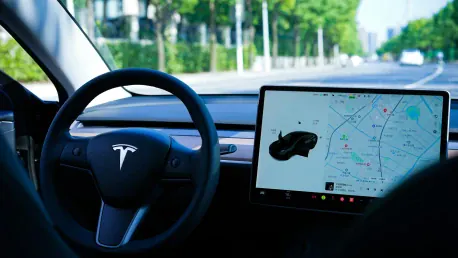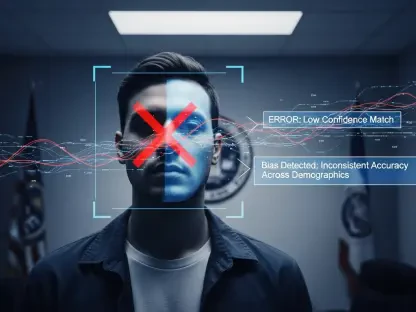Listen to the Article
Artificial intelligence is bringing us ever closer to the reality of science fiction. While the idea of flying cars is still a ways off, the automotive industry has made self-driving vehicles a real possibility in the coming few years. Tesla has plans to debut their Robotaxi, with some reports stating the autonomous cabs could be available as soon as June of 2025. Several legacy car brands and newer startups are heavily investing in research and development, making autonomous vehicles a near possibility.
AI is a major enablement factor. It continues to develop in leaps and bounds, driving the industry toward driverless automobiles.
The Role of Artificial Intelligence and Machine Learning in Autonomous Vehicles
Without artificial intelligence and machine learning, there are no autonomous vehicles. Self-driving cars require sophisticated technology to recognize surroundings, finetune decision-making, and navigate complex environments. These functions and features rely on deep neural networks and complex algorithms to mimic human actions and reactions.
Several technologies integrate with AI to ensure that autonomous vehicles are safe and operable; these include:
Computer Vision: Sensors and cameras combined with computer vision technology enables autonomous vehicles to capture real-time data. Artificial intelligence and machine learning formulas are used to identify objects such as pedestrians, vehicles, and road signs.
Machine Learning: Machine learning models are crucial to several functions in an autonomous vehicle. To give a brief overview, machine learning acts as the car’s “brain”. Developers use this technology to learn or study large datasets, and train data models to recognize patterns, and understand traffic behavior. All of this gives driverless vehicles a clear understanding of how to safely adapt and maneuver different conditions on roads.
Sensor Fusion: Autonomous vehicle systems use various sources of input data sensors that feed information about surroundings. LiDAR, sensors, radar, and cameras give information about lighting, distance from the nearest car, speed of surrounding vehicles and more. All of this information is required to make decisions. Sensor fusion is what brings these various pieces of information together to paint an accurate picture of surroundings, e.g., low light, the nearest car is close behind and in front, and the average speed of surrounding vehicles is slow; this could indicate traffic, and the car would respond accordingly.
Decision-Making Systems: Once again, AI and machine learning are central to the function of decision-making systems. Their ability to process large amounts of data and combine this with quick analysis and pattern recognition is essential to quick decision-making. Developers prioritize safety and efficiency.
Natural Language Processing: AI also plays a role in developing natural language processing, which is used to give voice-activated commands. This helps passengers interact with the vehicle and improves the consumer-centric user experience.
Challenges and Considerations
Artificial intelligence is a powerful tool in the hands of developers, and autonomous vehicles rely heavily on this technology for most of its features and functions, but there are considerable challenges to unpacking it.
Safety and Reliability:One of the biggest concerns with autonomous vehicles, naturally, is safety and reliability. Removing humans from the driver’s seat raises questions and concerns about how AI may handle unforeseen circumstances. In-depth testing protocols are necessary to give credence and trust to autonomous vehicles, which so far, hasn’t truly been achieved. However, experts believe that developers are on the right path. AI algorithms are the root of safety and reliability, and these algorithms will require excellent data quality. Researchers and engineers are working to improve these systems and are working to make self-driving cars better drivers than humans.
Cybersecurity and hacking:Another emerging concern is that cars that rely so heavily on technology and artificial intelligence are susceptible to threat actors. With multiple data sources and millions of lines of code, there are increased opportunities to find vulnerabilities, backdoors for hackers, and weak security. LiDAR in particular has been highlighted as a softer target for cybercriminals and the implications of this is still being explored.
Public Perception and Acceptance:Introducing new technology into society requires public acceptance and a positive perception for successful integration. This hinges on manufacturers and developers being transparent in their communication of the limitations and capabilities of AI overall, but particularly its role in autonomous vehicles. Asking people to literally and figuratively take their hands off the wheel, or share roadways with driverless vehicles is tantamount to putting their physical safety at the mercy of AI. Education campaigns and public demonstrations are essential to building trust and demystifying the technology. Showcasing the potential benefits, like improved safety, decreased congestion, and increased accessibility must be balanced with the risks.
With the advanced technology used, developers are also working to ensure that autonomous vehicles are easy to use and navigate, which is another key trust-building element. Without positive perception around AI and widespread buy-in, manufacturers are unlikely to see the mass adoption of this technology.
The future of AI in autonomous vehicles
AI is pushing the boundaries of what’s possible in autonomous vehicle technology. It’s poised to revolutionize the way we think about transportation.
AI-powered vehicles can make real-time decisions, navigate tricky road conditions, and even communicate with other vehicles to improve traffic flow. This means safer, more efficient transportation, and it could even lead to a significant reduction in carbon emissions. As AI continues to advance, the automotive industry is positioned for a bright future.
Concerns and considerations for AI in automotive
As artificial intelligence continues to shape the automotive industry generally, and the development of autonomous vehicles, specifically, there is a need to interrogate concerns. Self-driving vehicles raise questions about the security and ethics of these systems.
Legal and regulatory experts have raised questions like where fault lies in the event of an accident involving an autonomous vehicle. As manufacturers get closer to realizing a future where self-driving cars are a reality, these issues need to be addressed by the industry.
The automotive industry can address these concerns about the use of AI with the following strategies:
Transparency – Communicating transparently the way artificial intelligence works in the context of autonomous vehicles is essential to waylaying concerns of users and industry regulators. During the unveiling of the Tesla Cybercab, the company displayed AI-driven robots which were later found to be remotely controlled. This was a controversial public relations stunt which only underscored the need for the public to have access to information about how AI works in these vehicles, in order to build trust.
Data privacy – Stringent data protection measures are required to protect user data in autonomous vehicles. Restricting data collection to only necessary data for operational efficiency is one consideration for manufacturers and developers. Companies should also be forthcoming in explaining how data will be used and who will have access to this information.
Ethical guidelines – AI is constantly developing and ethical guidelines in the automotive industry must keep pace. Policy and regulatory frameworks need to make clear the responsibilities of manufacturers and operators and address concerns over liability issues, as well as accountability and culpability in the event of collision and fatalities involving autonomous vehicles.
Testing and regulation – Before vehicles are deployed for public use, they should undergo rigorous testing and be regulated by government agencies. This will help ensure that the technology is safe and reliable, and that potential ethical concerns are addressed before the cars are on the road. German manufacturer, Mercedes-Benz made headlines in 2022 when they announced that they would take full legal responsibility for any accidents caused by technical malfunctions in their Level 3 automation technology.
Concluding Thoughts
Artificial intelligence is undeniably shaping the future of autonomous vehicle development, driving advancements in safety, efficiency, and transportation accessibility. While the potential benefits are vast—ranging from reduced traffic congestion to lower carbon emissions—the road to full autonomy is still paved with challenges. Ensuring robust safety mechanisms, regulatory compliance, and public trust will be critical in bringing AI-powered vehicles to mainstream adoption.
As AI continues to evolve, collaboration between automakers, regulators, and technology providers will be essential to address cybersecurity threats, ethical considerations, and data privacy concerns. With strategic innovation and responsible implementation, autonomous vehicles have the potential to revolutionize mobility, redefining the way we travel and interact with our cities. The next few years will be pivotal in determining how AI-driven transportation integrates into our daily lives, making the vision of self-driving cars not just a possibility, but a reality.









